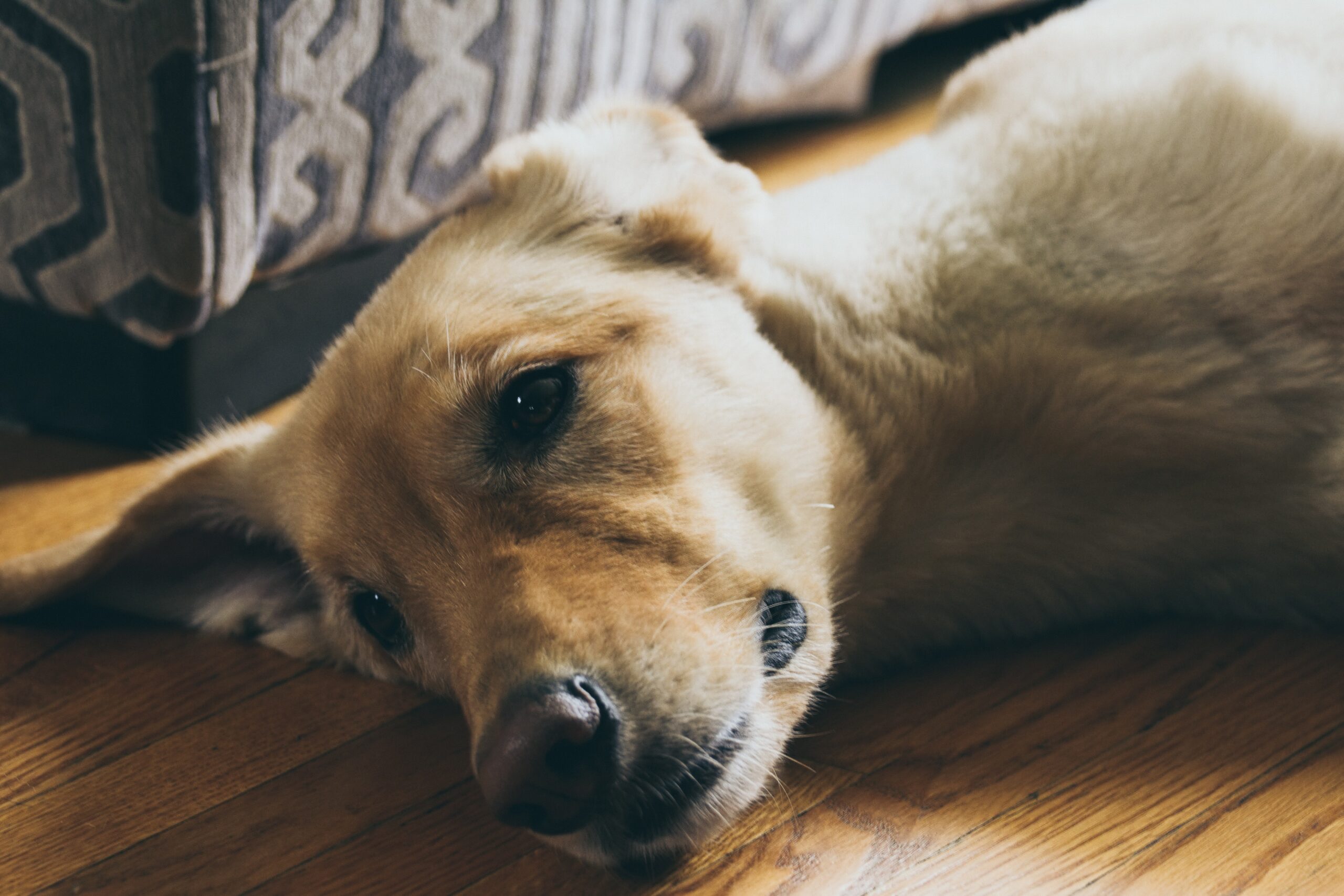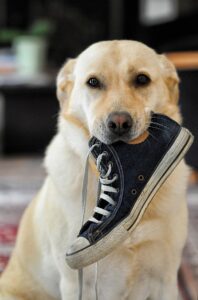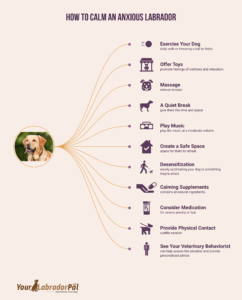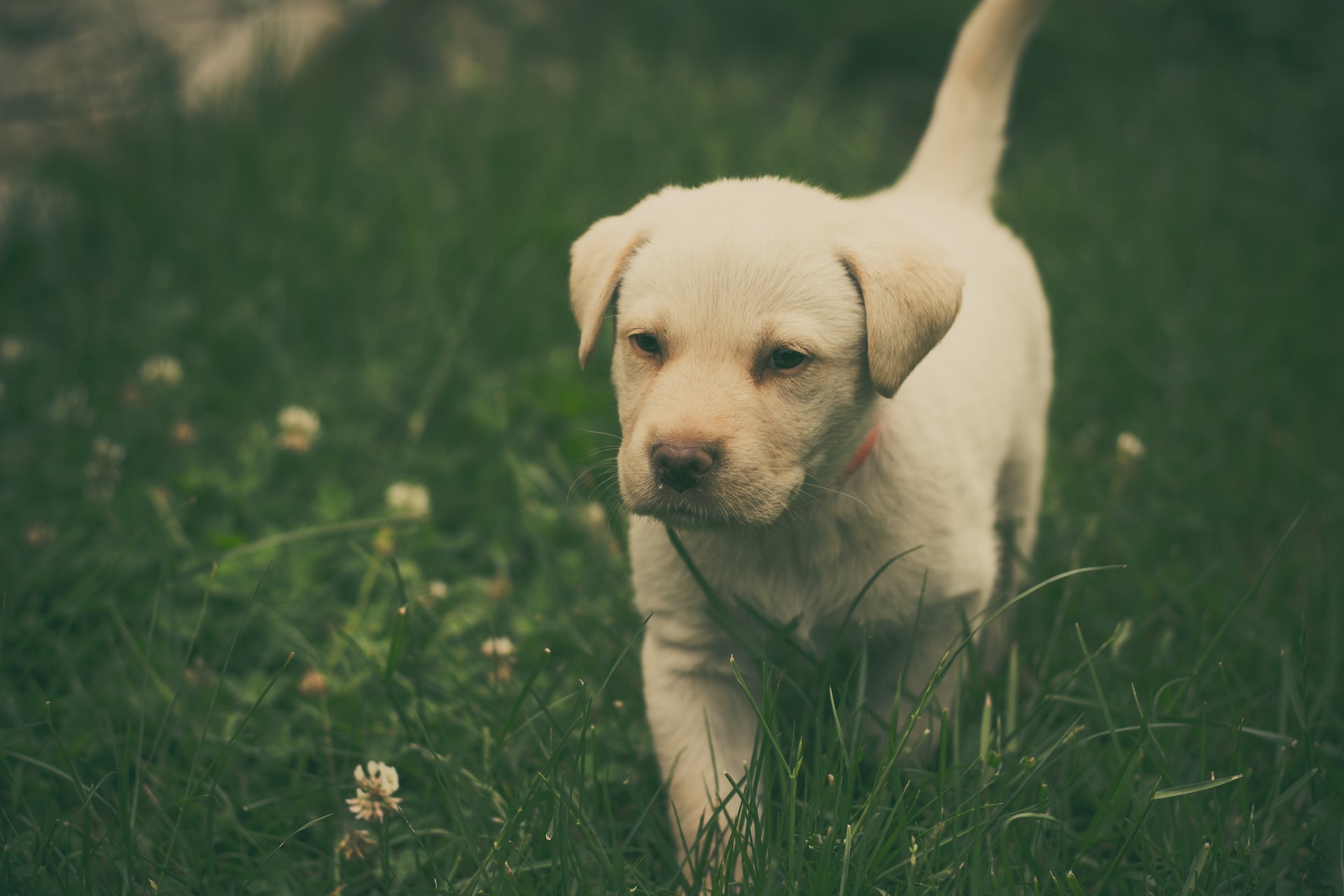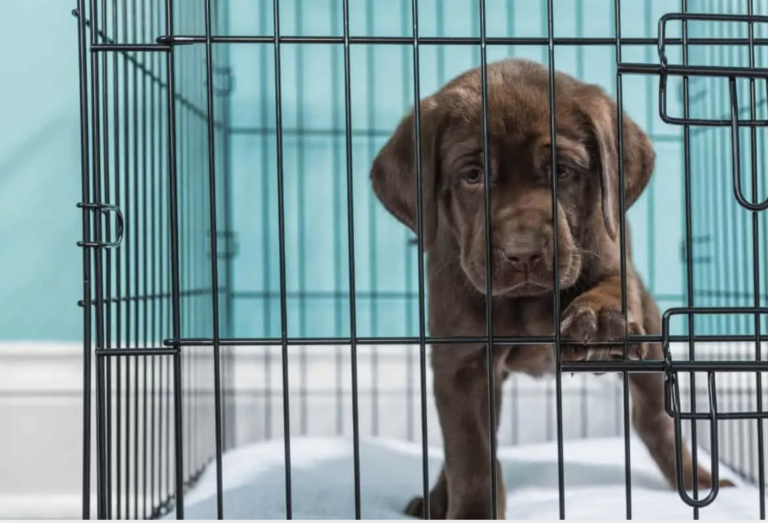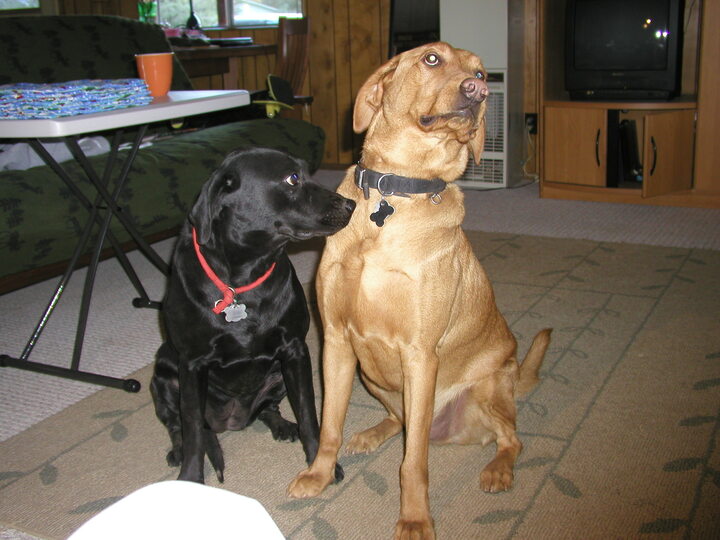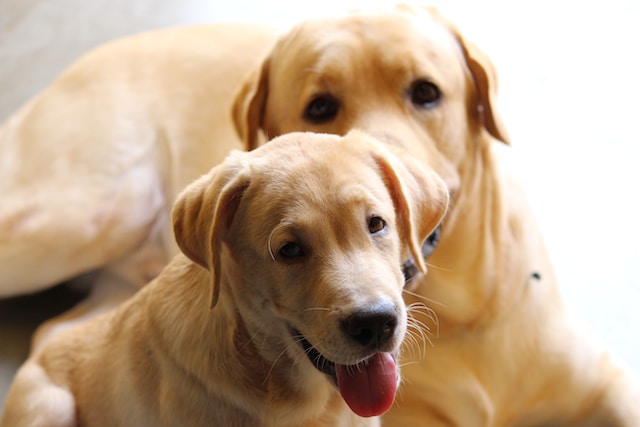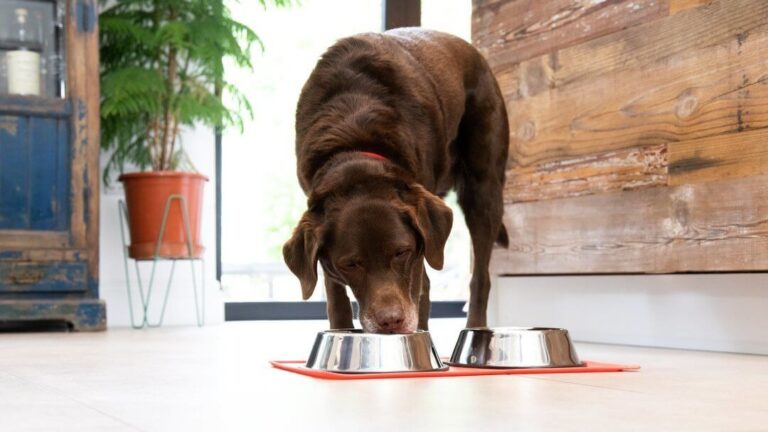How To Calm An Anxious Labrador
Ah, the lovable Labrador. They’re known for their wagging tails, energetic personalities, and their love of all things human. But what happens when your normally happy-go-lucky pup starts to show signs of anxiety? You might be wondering how to calm an anxious Labrador. It can be worrisome and stressful for both you and your furry friend.
But don’t worry; there are a few ways you can help calm your anxious Labrador and make them feel more relaxed and secure. Whether you’re dealing with a dog that’s afraid of thunderstorms or gets anxious when left alone, you can do some simple things to help them feel more at ease.
So if you’re struggling with an anxious pet, take heart: some solutions can help, and with a little patience and love, you can help your furry friend feel much better.
Recognizing Anxiety in a Labrador
We all know how much our furry friends mean to us, and it can be tough when they’re not feeling quite like themselves. Anxiety is a real problem for dogs, just like humans, and unfortunately, it can sometimes go unnoticed.
For labrador owners, it’s important to recognize when your pup might be feeling anxious. Labs are high-energy and friendly dogs, but they can still experience stress and anxiety, just like any other breed.
🐕 Whining
Whining is a common behavior amongst them, especially when they’re puppies. However, sometimes whining can be a sign of anxiety in your furry friend. Whining comes in different forms, it can be a low whimper or a loud whine, and it can mean several things. When you hear your Labrador whining excessively, it’s time to pay attention and see if it’s a sign of anxiety.
Anxiety is common among pets, especially when they’re separated from their owners or in unfamiliar environments. If your Labrador whines continuously when you leave for work or go shopping, it’s a sign that they feel anxious or stressed. The whine is a vocalization of their fear or discomfort. It’s essential to note that not all whining is a sign of anxiety.
Labs might sometimes whine because they’re hungry or thirsty or want attention. As a responsible owner, monitoring your dog’s behavior and determining the reason for their whining is crucial.
🐕 Tucked Tail
When a dog tucks their tail, it’s a way of them expressing that they’re submissive or scared. It’s a typical reaction to a situation or stimulus that they find intimidating. It’s important to remember that not all tail tucks are signs of anxiety, as some breeds naturally carry their tails in that position.
However, if your Labrador typically doesn’t tuck their tail and then suddenly starts doing it, it’s a good idea to pay attention and try to determine what might be causing the change in behavior.
🐕 Lip Licking
Lip licking is when your dog repeatedly licks its lips or flicks its tongue in and out over their mouth. It isn’t just a sign of thirst or hunger; it can be seen when your dog is feeling nervous, stressed, or anxious. It’s like when humans bite their nails or fidget when they’re feeling worried.
Lip licking is also seen when dogs are about to be fed or are anticipating food. Still, if your Lab is constantly lip-licking, even when they’re not hungry or thirsty, they could be trying to tell you that something is bothering them.
🐕 Chew or Destroy Furniture
There’s nothing worse than coming home to find that your furry friend has chewed up your favorite pair of shoes or destroyed your furniture. Unfortunately, this destructive behavior in Labradors is not just about being naughty; it can also be a sign of anxiety.
Chewing or destroying furniture is a common sign of anxiety in Labradors. When a dog is excessively anxious, it may resort to mindless chewing or scratching on furniture, shoes, or other household items. This behavior can provide them with relief from their anxiety, but it can also cause a lot of damage to your home.
🐕 Barking or Howling
Barking or howling is a common sign of anxiety in Labradors. When anxious, dogs may become extra vigilant or reactive to their surroundings. They may bark or howl at every little sound, constantly on edge and on the lookout for perceived threats. This behavior can be particularly concerning if it’s interfering with your daily life or causing complaints from your neighbors.
🐕 Dig Excessively
Labradors are known to be big fans of digging, but if your furry friend is digging excessively, it may be a sign of anxiety. Some dogs may try to dig their way out of anxiety, much like they would dig out of their kennel. They may also dig to release nervous energy or to create a sense of security by creating a “den.” If you notice your Lab digging excessively in your garden or its crate, it may be trying to escape its anxiety.
Common Causes of Anxiety in Labradors
Anxiety in dogs is a real thing that can have serious consequences if left unaddressed. But what exactly causes these feelings of stress and unease in Labradors? Here are some of the most common causes:
🦮 Separation Anxiety
You know that feeling when you have to leave your best friend, your furry companion, at home while you head off to work? Well, imagine feeling that way every single day. That’s how our beloved Labradors feel when they suffer from separation anxiety. It’s a real thing, affecting our furry friends more commonly than expected.
In fact, it’s one of the most common causes of anxiety in Labradors. But what exactly is separation anxiety, and how do we recognize it in our furry best friends?
Labradors are known for their friendly and social nature. They thrive on being around their human companions, so they can feel stressed out and anxious when they are left alone. Separation anxiety is a behavioral issue that stems from this sense of loneliness and anxiety. These dogs may become destructive or vocal when left alone, and unfortunately, they often suffer from a lot of emotional distress.
Symptoms of separation anxiety in dogs might include excessive barking, destructive behavior, escaping from the house, urination or defecation inside the house, vomiting, and excessive drooling.
🦮 Loud Noises
If you have a Labrador Retriever, then you know they can be such cuddle bugs. These pups love to be near their owners, always wagging their tails and ready for cuddles. However, when loud noises are part of the equation, these sweet pups can become downright anxious.
That’s right; noise phobia is a common cause of anxiety in Labradors. It’s heart-wrenching when you see your otherwise happy-go-lucky pup shaking and panting, seemingly inconsolable. So, why do Labradors have such a tough time with loud noises?
It is a combination of a few things. One of them is that Labradors are naturally sensitive dogs. They’re bred to be keen retrievers, meaning they’re excellent at tasks that require them to be observant and alert. However, this sensitivity also means they’re prone to get spooked easily, especially when encountering loud, unexpected noises. Plus, having less-than-stellar experiences with loud noises in their puppyhood can contribute to their noise phobia as they grow older.
🦮 Isolation Anxiety
Picture this – a fluffy, energetic Labrador eagerly jumping around its human family, wagging its tail with paws filled with energy. But as soon as they leave the house, anxiety sets in. Missing their company, the dog starts pacing around the house, whining and barking, and perhaps even destroying furniture. This is a classic example of isolation anxiety, which is a common cause of anxiety in Labradors.
Interestingly, it’s not only Labradors who experience this problem; it’s quite common among dogs of all breeds. Whether you have a German Shepherd, a Cocker Spaniel, or any other dog breed, isolation anxiety comes from the dog’s inability to understand why they’re suddenly alone. It’s a heartbreaking cycle that leaves the dog stressed and the owner frustrated.
🦮 Fear
Labradors can also experience anxiety due to fear of the unknown. They’re naturally curious dogs and love exploring new places and meeting new people and animals. But this sense of curiosity can quickly turn into fear if they’re suddenly exposed to something unfamiliar or uncomfortable – like a sudden loud noise or an intimidating stranger. It’s important to remember that this fear doesn’t make Labradors bad dogs; they’re just reacting to the unknown in a normal, instinctive way.
🦮 Generalized Anxiety
Another common cause of anxiety in Labradors is generalized anxiety. This type of anxiety is a long-term unease and nervousness not caused by a particular stimulus. It affects a range of areas in your Labrador’s life, such as their social interaction with humans and other animals, their day-to-day activities, and even their health.
Sounds familiar, right? I mean, who hasn’t felt like that at one time or another? But for our lovely Labradors, it can become quite problematic and affect their overall well-being.
🦮 Age-Related
With age comes several changes, including the onset of anxiety – an emotion that can be overwhelming for our influential canines. It’s essential to note that anxiety in Labradors is a common problem among older dogs. This means that the rapid aging process could be the root cause of anxiety in our furry friends.
But what causes anxiety in older dogs? Simply put, aging dogs are more prone to anxiety because of several reasons. First, they experience cognitive dysfunction – it’s almost similar to how people lose a memory with age. In dogs, confusion and forgetfulness lead to anxiety as the environment they have lived in for years becomes unfamiliar to them. The onset of chronic pain could also contribute to anxiety in older dogs.
🦮 Trauma or Abuse
Trauma and abuse are two of the most common causes of anxiety in Labradors. These two factors can significantly impact a dog’s personality and behavior, just as they can do for humans. According to the experts, trauma, such as being injured or involved in an accident, can lead to serious anxiety issues, especially if the injuries are profound and the experience is traumatic.
On the other hand, abuse, such as physical punishment or neglect, can also trigger anxiety in dogs. Dogs that have experienced abuse can suffer from long-term psychological effects, including constant worry, fear, and nervousness.
As a responsible pet owner, ensuring that your Labrador does not experience any traumatic events or abuse is vital. If they have, seeking professional help to address and manage anxiety is essential.
🦮 Lack of Socialization or Exercise
Labradors are social creatures, requiring plenty of exercise and a healthy diet to stay happy and healthy. Unfortunately, when Labradors don’t get enough socializing or exercise, it can lead to anxiety. When dogs lack the physical activity needed to stay healthy and active, they often become restless and anxious as their bodies crave the stimulation they need.
Similarly, when Labradors don’t have enough socializing opportunities, it can lead to boredom and loneliness, both of which can cause anxiety.
How To Calm An Anxious Labrador
Now that you know the common causes of anxiety in Labradors, you may be wondering what you can do to help calm your anxious pup. Fortunately, there are several ways to help an anxious Labrador; here are some tips:
✅ Exercise Your Dog
Taking your anxious dog for a daily walk or throwing a ball to fetch in the dog park is a great way to burn surplus calories, maintain a healthy weight, and relax the mind. Don’t be fooled by their adorable faces.
Labradors are highly energetic and need to run around to keep boredom at bay. The more exercise they get, the happier and healthier they become. They also become less prone to anxiety as regular physical activity releases feel-good chemicals, endorphins, into your dog’s brain.
But it’s not just physical exercise that can help relieve your furry friend’s anxiety. Mental stimulation is just as important. Activities that challenge your dog’s brain, such as puzzle games or obedience training, can keep their mind engaged and productive. It’s important to keep mixing things up so your dog doesn’t become bored or restless.
You know your dog best, so try different activities and see what they enjoy most. And don’t forget, use positive reinforcement when they complete a mentally- or physically-challenging task with a treat or affection.
✅ Offer Toys
Toys are their life! But did you know that toys can also be a great way to calm down an anxious pup? That’s right! Offering your furry friend their favorite toy can do wonders for their mood. And not just any toys – chew toys. Dogs love sinking their teeth into anything they can chew on, and offering them something to slobber all over is a great way to help them relax.
Now, I know what you’re thinking – why chew toys? Well, chewing is actually a natural stress reliever for dogs. It can help them release pent-up energy and calm their nerves. Additionally, the physical action of chewing can promote feelings of wellness and relaxation.
So, the next time your furry friend seems to be feeling extra anxious, try tossing them a sturdy chew toy. It may be just the thing they need to chill out and shake off their stress.
✅ Massage
Massaging your dog may take patience, but it’s worth it. Start by petting them slowly and calmly to get them used to being touched in a relaxed way. Then, gently press their muscles and apply circular motions to release tension. You can also try gentle stretches to help them limber up.
Keep in mind that every dog is unique and may have their own preferences when it comes to being massaged. If your pup seems hesitant, follow their lead and only proceed if they appear calm and happy. Remember, this process may take time and patience, but the results of a calm and content pup will make it all worth it.
✅ A Quiet Break
Picture this: you’ve set up a cozy spot for your pup in a dimly lit room with soft blankets and their favorite toy. You’ve turned off any loud noises or distractions, like the TV or radio, and have created a space that is solely dedicated to your dog’s wellbeing.
Now, let your pup do its thing. Give them the time and space to take a breather and ease their anxieties. With a quiet break, you’re giving your furry friend the much-needed peace and quiet they crave.
✅ Play Music
Now, you might be wondering, “What kind of music should I play, and how loud should it be?” Well, the good news is that there’s no one-size-fits-all answer. Every dog is different and can have different preferences when it comes to music. Some dogs might enjoy classical music, while others might prefer rock or pop. The key is experimenting and finding what works best for your furry friend.
As for volume, it’s important to play the music at a moderate volume. Playing music too loudly can exacerbate your dog’s anxiety, so it’s important to find a calming and comforting volume for your pup.
✅ Create a Safe Space
One of the simplest and most effective ways to ease their worries is by creating a safe space for them to retreat when they feel uneasy. Our dogs need a place to feel comfortable, relaxed, and secure. Whether it’s a quiet corner in the living room or their own cozy crate, having a designated space can make all the difference.
You see, when your lab is feeling anxious; he/she is looking for a safe haven to retreat to. A place that is familiar and provides a sense of comfort and security. And by providing them with that space, we are not only helping to calm them down, but we are also showing them that we understand and care for them.
✅ Desensitization
Desensitization is basically the process of slowly acclimating your dog to something they’re afraid of in a safe and controlled environment. The goal is to gradually reduce their fear and anxiety so they can confidently face their triggers, whatever they may be.
The beauty of desensitization is that it’s a gradual process that can be tailored specifically to your dog’s individual needs. With consistency and patience, you can help your furry friend learn to cope with their fears and lead a happier, less anxious life.
So, next time your anxious lab starts freaking out over something seemingly innocuous, don’t panic! Remember that desensitization might just be the key to unlocking their confidence and helping them overcome their anxiety.
✅ Calming Supplements
These supplements are specially formulated to provide a sense of relaxation and calmness to our dogs, helping them feel safe and secure even in the most stressful situations. Now, let me tell you, finding the right calming supplement for your Labrador can be a bit overwhelming. With so many options out there, it can be hard to know which one is the best for your dog.
Make sure to choose a supplement that contains all-natural ingredients, as these tend to be gentler on dogs’ systems. Look for supplements containing ingredients like chamomile, passionflower, and valerian root, all known for their calming properties.
And last but not least, be sure to follow the dosage recommendations carefully to ensure your pup is getting the right amount of supplement for their needs.
✅ Consider Medication
If your Labrador Retriever suffers from severe anxiety or fear, medication may be the best option. With the help of your vet, you can decide which type of medication might be best suited for your pup’s needs. Medication can help ease their anxieties and make it easier to stay calm in situations that normally trigger their fears.
It’s important to note that medication is not a miracle cure and should be used in conjunction with other anxiety-relieving methods. Using the medication as your vet prescribes is also important, as it will only work when taken properly.
✅ Provide Physical Contact
A little cuddle session can go a long way in calming down an anxious Labrador. It’s all about making them feel safe and loved. So the next time you notice your pup feeling anxious, try sitting with them and holding them close. Now, I know what some of you might be thinking.
What if my Labrador doesn’t like physical contact? Well, every dog is different, so it’s important to take cues from your pup. If they seem uncomfortable or reluctant, don’t force it. Instead, try sitting near them and speaking softly while they get used to your presence.
And if physical contact still isn’t working, don’t worry. You can try plenty of other things, like getting them a cozy blanket to snuggle up with. At the end of the day, the most important thing is to make sure your dog feels safe and loved.
✅ See Your Vet or Veterinary Behaviorist
If you feel like your Labrador Retriever has a severe anxiety problem, it’s important to speak with a professional. A vet or certified veterinary behaviorist can help assess the situation and provide personalized advice tailored to your pup’s specific needs. They may also be able to recommend medications that can help reduce the severity of their anxiety symptoms.
Finally, a vet or veterinary behaviorist can provide you with the tools and resources necessary to help your pup manage its anxiety in the long term. So if you’re feeling overwhelmed by your Labrador’s anxiety, don’t hesitate to seek professional help. It could be the key to helping your pup live a happier, healthier life.
Frequently Asked Questions
Q: How do Labrador Retrievers exhibit situational anxiety or anxiety in response to stressful situations, such as loud noises or unfamiliar environments?
Well, it’s actually quite common for Labs to exhibit situational anxiety or anxious behavior when faced with loud noises or unfamiliar environments. You might notice them pacing, panting, or even shaking in response to these stressors. This behavior is their way of coping with the overwhelming situation they find themselves in. To help your Lab feel more at ease, you can offer plenty of reassurance and comfort. Give them plenty of love and attention, and try to avoid exposing them to loud or unfamiliar situations.
Q: How can I help my hyper dog deal with their storm anxiety?
One option is to make a cozy spot for your dog to retreat to during storms, like a crate or a comfy bed with some blankets. You can also try playing calming music or white noise to drown out the scary sounds of thunder. Another idea is to work on some desensitization exercises with your dog, gradually exposing them to thunder noises in a safe and controlled environment. Whatever approach you take, just remember to be patient and gentle with your pup – they’ll appreciate your love and understanding during these stressful moments.
Q: What does behavior modification look like when dealing with my Labrador Retriever’s anxiety?
Behavior modification is simply the process of changing unwanted behaviors through positive reinforcement and other techniques. With anxious Labradors, creating a calming environment and encouraging positive behaviors is important. This can involve things like introducing them to new situations slowly, providing plenty of exercises and mental stimulation, and rewarding good behavior with treats and praise. Remember that every dog is different, so working with a professional trainer or behaviorist is important to develop a customized plan for your furry friend.
Q: Do I need a dog trainer or veterinarian to help me with my Labrador anxiety?
While both a dog trainer and a veterinarian are valid options, it really depends on the root cause of your pup’s anxiety. If it’s behavioral, a dog trainer can work with you to address the problem and give you tools to help your furry friend feel more comfortable. However, if the anxiety is due to an underlying medical issue, a veterinarian may be able to provide medication or other treatments to help alleviate the stress. Ultimately, the best course of action may be a combination of both approaches. The important thing is that you recognize your pup needs support, and you’re taking steps to get them the help they need.
Q: Why is it important to seek professional help for Labrador Retriever anxiety?
It’s essential to seek professional help for your pup’s anxiety because, left untreated, it can lead to serious physical and mental health issues in the long run. A certified trainer or behaviorist can provide you with insight into why your pup is exhibiting anxious behaviors and give you tools to help them feel more comfortable. Additionally, a veterinarian may be able to diagnose any medical issues contributing to your pup’s anxiety and provide medication or other treatments to help manage the problem. In any case, getting professional help is the best way to ensure your pup gets the care they need and deserve. It will also give you peace of mind knowing that you are doing all you can to help your beloved Labrador Retriever.
Final Words
Calming an anxious Labrador is all about understanding their needs and providing them with a sense of security. It’s important to identify what triggers their anxiety and avoid exposing them to those situations as much as possible. You can also try the various tactics we discussed earlier, such as keeping them occupied with toys and games, using calming scents, and establishing a consistent routine.
Remember that every dog is unique, and what works for one Labrador may not work for another. It may take some trial and error to find the best approach for your furry friend, but with patience and persistence, you can help them feel relaxed and comfortable in their environment. Always be attentive to your pet’s behavior, and don’t hesitate to seek help from a veterinarian or professional trainer if you feel overwhelmed. With the right care and attention, you can help your anxious Labrador live a happy, stress-free life!

